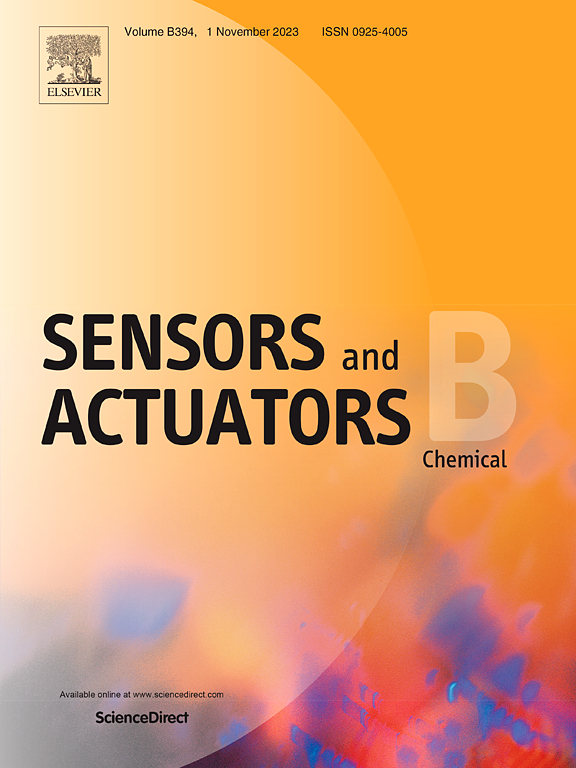生物系统中抗坏血酸和碱性磷酸酶双重检测的自分解Co-PDI荧光结构策略设计
IF 8
1区 化学
Q1 CHEMISTRY, ANALYTICAL
引用次数: 0
摘要
碱性磷酸酶(ALP)是临床诊断中重要的生物标志物,其活性水平与各种病理状况直接相关。在这项工作中,我们提出了一个合理设计的基于钴-苝二亚胺(Co-PDI)金属-有机配合物的荧光传感平台,该平台具有红色发射特性,可同时检测抗坏血酸(AA)和ALP活性。这种传感机制是通过AA和PDI配体在Co2+结合位点的竞争配位来实现的。这种竞争触发PDI分子的释放,这些分子随后在高浓度下形成聚集体,导致荧光猝灭。通过系统优化,该系统对AA和ALP的检测均具有较高的选择性和灵敏度。为了提高实用性,我们开发了一个集成智能手机的检测平台,可以对分析物进行实时可视化监测。通过在复杂的生物基质中进行广泛的测试,包括癌细胞裂解物、肝纤维化小鼠血清和原料牛奶样本,验证了该传感系统的实际功效。该平台成功检测到肝癌细胞和纤维化小鼠血清中ALP表达升高。这种强大的传感平台为复杂生物环境中ALP的精确定量提供了一种有前途的工具,有可能促进疾病的早期诊断和监测。本文章由计算机程序翻译,如有差异,请以英文原文为准。
Strategic design of self-disassembling Co-PDI fluorescent architecture for dual detection of ascorbic acid and alkaline phosphatase in biological systems
Alkaline phosphatase (ALP) serves as a crucial biomarker in clinical diagnostics, where its activity levels directly correlate with various pathological conditions. In this work, we present a rationally designed fluorescence sensing platform based on a cobalt-perylene diimide (Co-PDI) metal-organic coordination complex that exhibits red emission for the simultaneous detection of ascorbic acid (AA) and ALP activity. The sensing mechanism operates through competitive coordination between AA and PDI ligands at Co2+ binding sites. This competition triggers the release of PDI molecules, which subsequently form aggregates at high concentrations, leading to fluorescence quenching. Through systematic optimization, the system demonstrates high selectivity and sensitivity for both AA and ALP detection. To enhance practical applicability, we developed a smartphone-integrated detection platform, enabling real-time visual monitoring of analytes. The practical efficacy of this sensing system was validated through extensive testing in complex biological matrices, including cancer cell lysates, liver fibrosis mouse serum, and raw milk samples. The platform successfully detected elevated ALP expression in both liver cancer cells and fibrotic mouse serum. This robust sensing platform offers a promising tool for precise ALP quantification in complex biological environments, potentially facilitating early disease diagnosis and monitoring.
求助全文
通过发布文献求助,成功后即可免费获取论文全文。
去求助
来源期刊

Sensors and Actuators B: Chemical
工程技术-电化学
CiteScore
14.60
自引率
11.90%
发文量
1776
审稿时长
3.2 months
期刊介绍:
Sensors & Actuators, B: Chemical is an international journal focused on the research and development of chemical transducers. It covers chemical sensors and biosensors, chemical actuators, and analytical microsystems. The journal is interdisciplinary, aiming to publish original works showcasing substantial advancements beyond the current state of the art in these fields, with practical applicability to solving meaningful analytical problems. Review articles are accepted by invitation from an Editor of the journal.
 求助内容:
求助内容: 应助结果提醒方式:
应助结果提醒方式:


